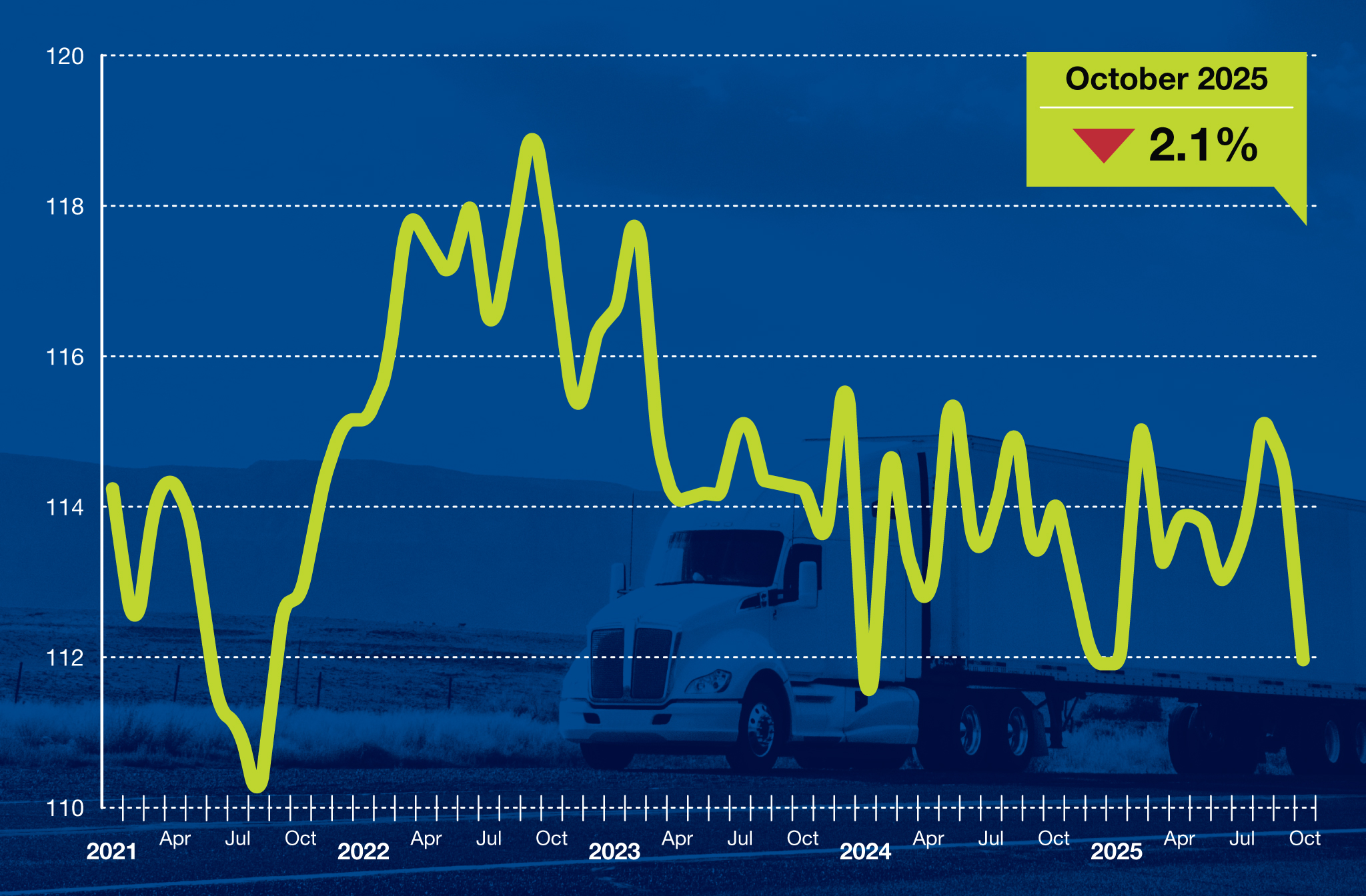October drop was the largest in 21 months
Washington – Trucking activity in the United States fell in October, pushing the level down to the lowest since January. Specifically, truck freight tonnage decreased 2.1% after falling 0.8% in September, according to the American Trucking Associations’ advanced seasonally adjusted For-Hire Truck Tonnage Index.

“October’s weakness shows the freight market remains very difficult, dropping the most of any single month since January 2024,” said ATA Chief Economist Bob Costello. “As a result, the level of freight was the lowest since January 2025. Compared with a year earlier, tonnage experienced its largest decline in 2025.”
In October, the ATA advanced seasonally adjusted For-Hire Truck Tonnage Index equaled 111.9, down from 114.3 in September. The index, which is based on 2015 as 100, contracted 1.8% from the same month last year after increasing 0.9% in September. Year-to-date, compared with the same period in 2024, tonnage was unchanged.
September’s SA decrease was revised up slightly from that first reported in our October 20 press release.
The not seasonally adjusted index, which calculates raw changes in tonnage hauled, equaled 119.2 in October, 3.8% above September’s reading of 114.8.
Trucking serves as a barometer of the U.S. economy, representing 72.7% of tonnage carried by all modes of domestic freight transportation, including manufactured and retail goods. Trucks hauled 11.27 billion tons of freight in 2024.* Motor carriers collected $906 billion, or 76.9% of total revenue earned by all transport modes.
Both indices are dominated by contract freight, as opposed to traditional spot market freight. The tonnage index is calculated on surveys from its membership and has been doing so since the 1970s. This is a preliminary figure and subject to change in the final report issued around the 5th day of each month. The report includes month-to-month and year-over-year results, relevant economic comparisons, and key financial indicators.
* 2024 estimates include forecasts.